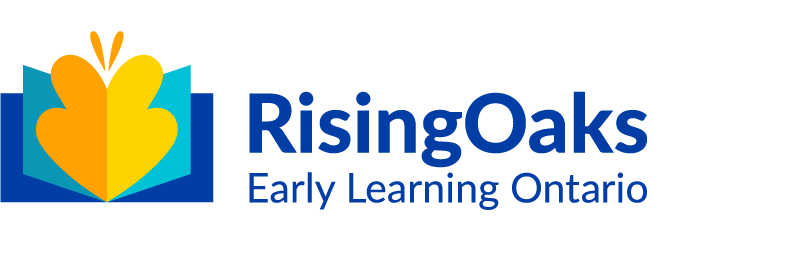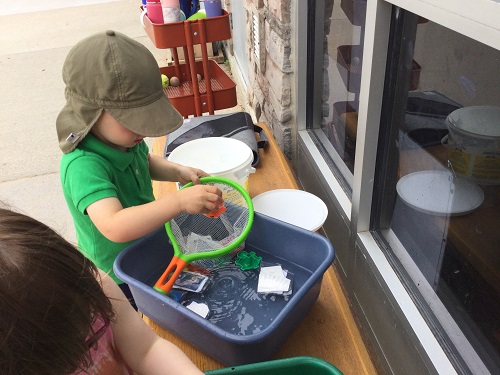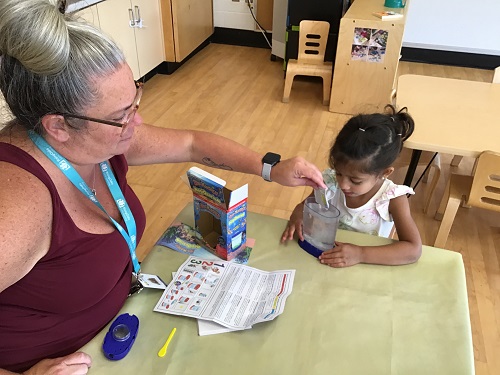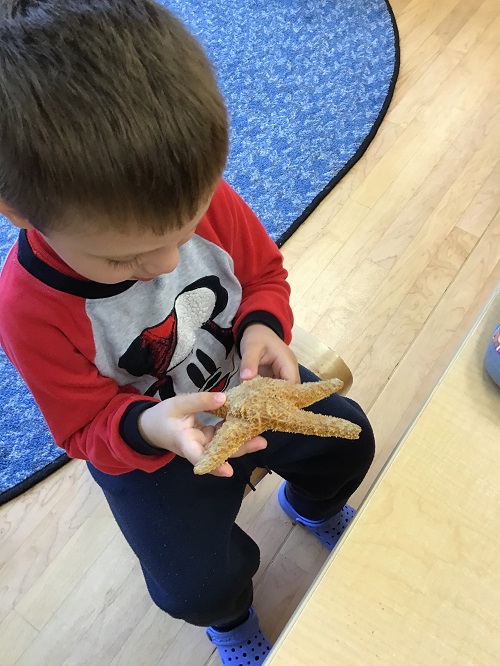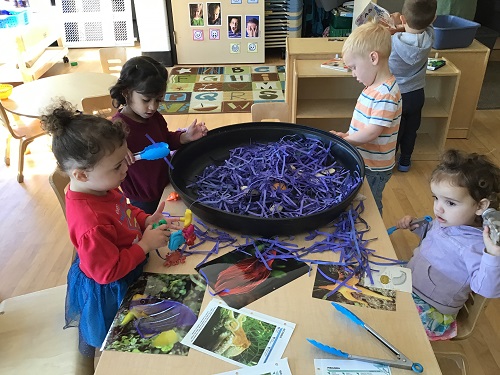As the hot weather approaches and families begin to visit the beach and go on vacation, the Educators in the toddler room at RisingOaks | John Sweeney thought it would be the perfect opportunity to introduce the children to things that can be found in the ocean. Debbie filled the tuff tray with blue shredded paper (representing the water) and added real rocks and shells along with plastic fish, shells, turtles, crabs, and a dolphin. The children were given tongs and were encouraged to sift through the paper to find the materials. Large pictures of the same objects were placed on the table for the children to look at and compare. Outside, Vanessa and Tirhas prepared the same type of activity using water, fishing nets and laminated pictures. The toddlers already knew the names of some of the pieces and quickly learnt the names of the others.
The children in both groups seemed to be curious and interested in learning more, so the Educators collected materials and placed them on a small shelf in the room for the children to explore freely as they began planning for more activities. Isla was very proud of herself for completing the 8 piece wooden puzzle and Oscar successfully fit all of the sea life stacking pieces inside one another. The children had the opportunity to engage in creative experiences making an ocean life collage (Callum laughed when he heard the name of one of the fishes was a squirrel fish), a sea horse craft and an octopus craft. When Debbie was searching for more information about sea horses on the iPad, the children wanted to look at the pictures too, so she showed them real life photos and videos of several of the things found in the ocean. “More, more” said Carina excitedly. We watched videos of a sea horse, sea stars, crabs, sharks and an octopus. Quinn wiggled her arms imitating an octopus and Ophelia associated a shark with the “Baby Shark” song. Each time a new video was shown, the children sat quietly in amazement at what they were seeing. The images showed something much different and life like compared to the plastic pieces we had used in the beginning. We learnt about each of the creature’s body parts, habitats and how they moved through the water or along the sand.
The educators continued to provide real life experiences. Tirhas had the children wash large shells with soapy water and brushes and Debbie brought in a real sea star for the children to examine. “Star” said Brian excitedly as he held the sea star in his hands. Lucy managed to find an instant sea monkey kit so that we could grow our own sea monkey’s.
According to Deb Curtis (author/expert in the field of Early Childhood Education) “the most engaging environments and materials for children invite them to explore their growing interest and ideas, and to show us what they know”. As educators this motivates us to continue to search for new activities to present to the children as we anxiously wait for the sea monkey eggs to hatch.
